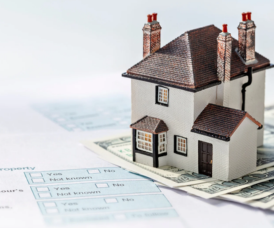Every year, thousands of people pay more property taxes than they should, just because they don’t know how to appeal their tax assessment. If your property value assessment seems too high, or your tax bill keeps rising, it might be time to consider a property tax protest.
This article will explain how the property tax appeal process works, why a tax appeal appraisal is important, and how to reduce your property tax legally whether you own a home or commercial property.
What Is a Property Tax Appeal?
A property tax appeal (or real estate tax appeal) is when you ask your local tax office to review your property value because you believe it’s too high. If your appeal is successful, you can get a property tax reduction and pay a lower property tax bill.
This is your legal right, and millions of homeowners and business owners file appeals every year.
Why Are My Property Taxes So High?
Local governments use a tax assessment to decide how much your home or building is worth. But sometimes, this value is too high, especially if:
- They didn’t visit your property
- They used average prices from your neighborhood
This leads to an unfair property assessment, which means higher taxes.
What Is a Tax Appeal Appraisal?
A tax appeal appraisal is a special type of report done by a professional appraiser for property tax appeal. It shows the true value of your home or building based on facts like location, condition, and recent sales of similar properties.
You can use this report to support your tax assessment appeal.
- Tip: A regular home appraisal isn’t always enough. You need one that’s made for disputing property tax assessment specifically.
How to Appeal Property Taxes in Simple Steps
Here’s how to start a property tax appeal:
- Review Your Assessment
Look at the value your city or county gave your property. If it’s higher than what you think your property is worth, you may have a case.
- Compare with Similar Homes or Buildings
Look for properties like yours in the same area with lower values. This helps with property tax review and shows unfair assessment.
- Hire a Property Tax Consultant or Appraiser
These experts help you build a strong case. They know how to challenge property tax and provide tax appraisal services.
- Submit Your Appeal Before the Deadline
Every area has its own rules. Be sure to send your forms, documents, and home appraisal for tax appeal on time.
Common Reasons to Dispute Home Value
You can dispute home value or commercial building value if:
- Your property has damage (roof, foundation, plumbing)
- It’s smaller or older than other homes nearby
- You have low rental income from tenants
- It’s next to noisy roads or commercial areas
- The city made a mistake in your records
Special Case: Commercial Property Tax Appeal
Commercial property owners (offices, retail, apartments) often get hit with very high assessments. If your building has high vacancy, low income, or needs repairs, you may qualify for a big real estate tax reduction.
A good tax appeal strategy includes:
- Rent rolls
- Maintenance logs
- Photos of damage or needed updates
- Commercial tax appeal appraisal reports
Residential Tax Appeals: Don’t Miss Out
Even for homeowners, a successful residential tax appeal can save hundreds or thousands per year. Many people don’t file because they think it’s hard or won’t work.
But the truth is: appealing tax assessment is easier than it sounds—with the right help and information.
What Happens After You Appeal?
Once you file your property assessment dispute, the tax office will:
- Review your documents
- Possibly schedule a hearing
- Make a decision: keep the same value, or adjust your property tax
If you win, your property tax adjustment could start that same year.
Conclusion:
Whether you’re a homeowner or a commercial investor, you don’t have to accept a high tax bill. With the right home value reassessment tips, a solid tax appeal appraisal, and expert help, you can fight back and lower your property taxes fairly. Want help understanding your tax situation? Talk to a tax appeal expert or property tax consultant like TYKE for tax appeal service to guide you through the process with ease and confidence.









